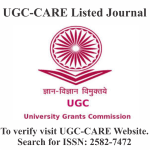A STUDY THE LIMITATIONS OF LEAN PRODCUTION CONTROL IN AUTOMOBILE INDUSTRIES AT PUNE ZONE
DOI:
https://doi.org/10.29121/shodhkosh.v5.i6.2024.1651Keywords:
Lean Production Control, Quantity, Quality, Efficiency of Production, LabourAbstract [English]
Lean Production Planning and Control is to be contrasted with project controls. His effectiveness of Lean Production Planning and Control is sometimes limited because of external factors, which are beyond the control of Production Manager. Sudden break-down or beak-out of war, government control, natural calamities, change in fashion, change in technology, etc.As explained, project controls have developed to become centralized functions to track project progress and identify deviations from plan and to forecast future progress, using metrics rooted in accounting principles.
Thus, lean production control is some scientific procedure to regulate an orderly flow of material and co-ordinate various production operations to accomplish the objective of producing desired item. In right quantity of desired quality at the required time by the best and the cheapest method i.e., to attain highest efficiency in production.
Alternately, production control is the function of management, which plans, directs and controls the material supply and processing activities of an enterprise; so that specified products are produced by specified methods to meet an approved sales programme. It ensures that the activities are carried in such a way that the available labour and capital are used in the best possible way.
References
Sugimori et al. “Toyota Production System and Kanban System : Materialization of Just in Time and Respect for Human Systems.” International Journal ofProductionResearch,15,553564. http://dx.doi.org/10.1080/00207547708943149.Volume-20. Issue -4, pp.27-35 1977. DOI: https://doi.org/10.1080/00207547708943149
Berliner et al.“Importance of non-financial measures such as production control, quality, throughput, and flexibility Economics” Volume, pp.45-55 1988,
Krafcik J F.“Triumph of the lean production system.” Sloan Management Review, Volume30, No.1, pp. 41–52. 1988.
Womack et al. (1990) 04” the movement of automobile manufacturing took place from craft production to mass production, International Journal Operations and Production Management, Volume.21, Issue-11, pp. 22-31,1990.
Johansson and Johansson“Design and performance of kitting and order picking systems” International Journal of production economics, Elsevier Publisherhttps://doi.org/10.1080/00207543.2020.1788734, Volume 41., Issue-1-3, pp.115-125.1990. DOI: https://doi.org/10.1016/0925-5273(95)00083-6
Bozer and McGinnins, “Optimising part feeding in the automotive assembly industry : deciding between kitting and line stocking” International Journal of production Research, Volume30, Issue-10, pp.23-31 1992.
Barker R C. “Production systems without MRP : A lean time based design”, Int. Jr. Management science, Volume 22, No.4, pp. 349 – 360, 1994. DOI: https://doi.org/10.1016/0305-0483(94)90061-2
Fynes B. and Ennis S. “From Lean Production to Lean Logistics : The case of Microsoft Ireland”, European management Journal, Volume 12, Issue .3, pp.322-331, 1994. DOI: https://doi.org/10.1016/0263-2373(94)90067-1
Acaccia G M, Callegari M, Michelini R C, Milanesio R, Molfino R M and Rossi A.“Pilot CIM implementation for lean engineering experimentation”, Computer integrated manufacturing system, Volume 8, Issue.3, pp. 185 – 192, 1995. DOI: https://doi.org/10.1016/0951-5240(95)00013-J
Brynzer, Johnsson B and Johnsson M. “High automated kitting system for small parts – a case study from Uddevallaplant”, International symposium on automotive technology and automation, Volume-23, Issue -12,1995.
Chary, S.N., Operations Management, TMH, 1996
Baffa and Sarin, R., Modern Production/ Operations Management, John wiley and Sons,2002.
Chase, R.B, Aquilano, N.J., and Jacobs, F, R., Production and Operations management : Manufacturing and Services. Tata McGraw-Hill
Chopra, S. and Meindl, p., Supply Chain Management : Prentice Hall Delhi.
Krajewski, L. J. and Ritzman, L.P., Operations Management : Strategy and Analysis, 5th ed, Addison Wesley.
Downloads
Published
How to Cite
Issue
Section
License
Copyright (c) 2024 Amol Arjunrao Bangar, Dr. Milind Audumbar Kulkarni

This work is licensed under a Creative Commons Attribution 4.0 International License.
With the licence CC-BY, authors retain the copyright, allowing anyone to download, reuse, re-print, modify, distribute, and/or copy their contribution. The work must be properly attributed to its author.
It is not necessary to ask for further permission from the author or journal board.
This journal provides immediate open access to its content on the principle that making research freely available to the public supports a greater global exchange of knowledge.




















